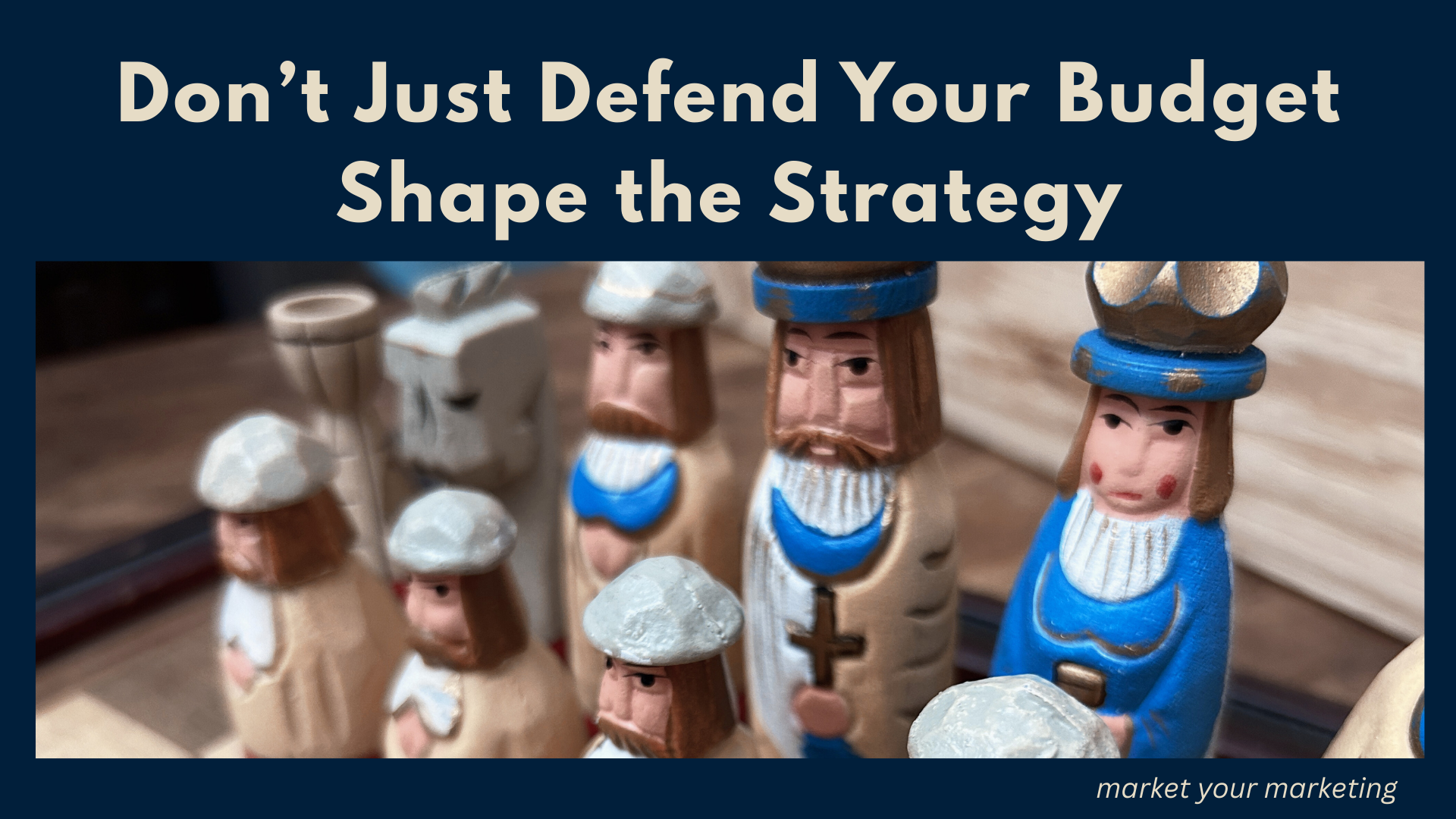
When times get tough, marketing is usually first on the chopping block.
If you’ve ever watched your work reduced to a deleted row in a spreadsheet, you know how powerless that can feel. For years, marketers have carried that quiet anxiety: the fear that no matter how hard they work, their budget will disappear when pressure comes.
But something different is happening. Major business leaders are making it clear they are not cutting marketing. They’re doubling down.
That shift is more than a financial decision. It’s validation of influence — and a chance for marketers everywhere to rethink how they show their value.
The Shift at the Top
As Adweek reported, executives at Molson Coors, Ralph Lauren, Church & Dwight, Kenvue, and McDonald’s are publicly defending their marketing budgets instead of trimming them.
- Molson Coors said they will continue to put the right commercial pressure behind their core brands and innovations.
- Ralph Lauren increased marketing investment to 7.5% of sales, up from 6.7% the year before.
- Church & Dwight committed to protecting marketing spend even if it meant a short-term hit on earnings.
- McDonald’s described its recipe for success as three ingredients: value, menu innovation, and marketing.
These are not small bets. They reflect a broader shift, with household-name brands choosing to defend visibility and connection even while margins are tight.
Why This Matters for Internal Marketers
It’s tempting to think, “That’s Fortune 500 logic. My company is not Ralph Lauren.” Fair — but the principle applies to all businesses.
Marketing is not a cost center. It’s how companies stay relevant when conditions shift. It’s how leaders ensure they remain top of mind when customers are making tougher choices.
But let’s be honest. Not every decision is made on logic alone. Sometimes marketing budgets fall victim to organizational politics. The loudest voice in the room or the department with the strongest executive sponsor can sway the outcome.
That’s why influence is not optional. It’s not enough to be right about marketing’s value. You need the power to make it visible at the table where decisions happen.
Research from McKinsey & Company makes this clear. In a 2023 survey of CMOs, boards asked for an average 8% reduction in marketing budgets — and in some cases, cuts went as high as 20%. Influence alone can’t always stop the knife. But resilient marketers don’t just absorb cuts. They reassess. They trim inefficient spend and reallocate resources toward higher-growth bets.
That’s not belt-tightening — it’s an investor mindset that positions marketing as a driver of resilience.
So how can marketers apply this mindset in their own organizations?
How to Market Your Marketing in This Climate
Track the right outcomes. Don’t just report activities. Show how your work ties directly to revenue protection, customer retention, or lead quality.
Frame your work as resilience. Position marketing not as a “nice to have,” but as the bridge that keeps your company visible when competitors go quiet.
Share examples from the top. Bring up stories like McDonald’s or Ralph Lauren in your next leadership conversation. They prove that even in uncertainty, marketing is essential.
Know when to pivot. Some organizational cultures will still treat marketing as expendable. Recognize the difference early and decide if it’s worth staying in that fight.
Build allies across the business. You don’t have to defend marketing alone. Finance, sales, product, and operations all benefit from strong marketing. Bring them into the conversation so your voice is multiplied, not isolated.
Reassess and invest strategically. As McKinsey points out, resilient companies do not cut evenly across the board. They find inefficient spend, cut what doesn’t drive profitable growth, and double down where ROI is strongest. When you show leadership that you’re willing to make hard choices and reinvest in growth, you shift the conversation from defending budget to driving strategy.
Don’t block the top of the funnel. Just like in real life, cutting off awareness activities undermines your goal. Cutting marketing often means cutting the very efforts that fill your pipeline. If you only invest at the bottom of the funnel — conversion and retention — you will eventually run dry. Companies can’t expect to hit revenue goals if they don’t support the activities that attract customers in the first place.
Smart marketers are already modeling this. Sarah Stahl recently shared how she grew direct bookings from zero to 93 percent at a hospitality startup by testing, cutting what didn’t work, and doubling down on what did. Her story is a reminder that resilience doesn’t come from defending every dollar — it comes from knowing where to invest for growth.
Keep the Long View
Economic cycles are temporary. Leaders like Gavin Hattersley of Molson Coors are already thinking about the other side. As he put it:
“When the tide turns, we want our brands in the best position they can be.”
That’s the mindset you can claim — not just to survive, but to lead.
Influence isn’t about surviving the next budget meeting. It’s about preparing for the moment when opportunity comes and making sure your value is already undeniable.
Final Thought
As a marketer, you don’t get to control tariffs, inflation, or board mandates. But you do control how clearly you connect your work to business outcomes — and how visibly you build influence in the rooms where decisions get made.
Influence in marketing isn’t about saying “don’t cut us.” It’s about proving you know where to protect core investments, where to pivot, and how to reinvest in growth.
McKinsey’s research shows that companies adopting this investor mindset do more than survive downturns — they create distance from competitors when the economy rebounds.
When the pressure comes — and it always does — don’t just defend your budget.
Build influence. Build allies.
Market your marketing so clearly that leaders see it as their competitive edge.
Don’t wait to be validated. Market your marketing now, before someone else decides it doesn’t matter.
FAQs
Why do companies cut marketing budgets during downturns?
Marketing is often misunderstood as a cost center rather than a growth driver. When budgets tighten, leaders default to trimming what they view as discretionary spend.
What can marketers do to protect their budgets?
Marketers should tie activities directly to business outcomes like customer retention, revenue protection, and lead quality. Influence and cross-functional allies are just as important as data.
What is the “investor mindset” for marketers?
Instead of defending every dollar, marketers should identify inefficient spend, reallocate toward high-ROI activities, and position marketing as resilience.
How do Fortune 500 brands approach this challenge?
Companies like McDonald’s, Molson Coors, Ralph Lauren, and Church & Dwight are protecting or increasing marketing investment, even when margins are tight, to ensure visibility and growth.
What if your organization doesn’t value marketing?
Some cultures won’t change. Marketers should assess whether the environment allows influence and decide whether to fight for visibility or pivot elsewhere.



